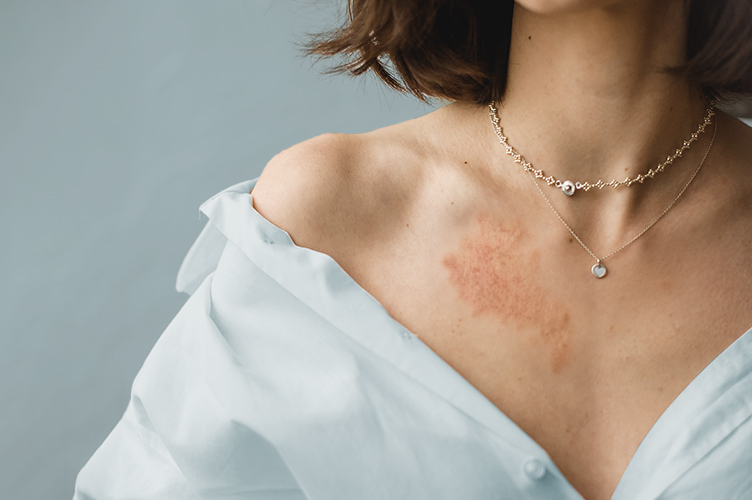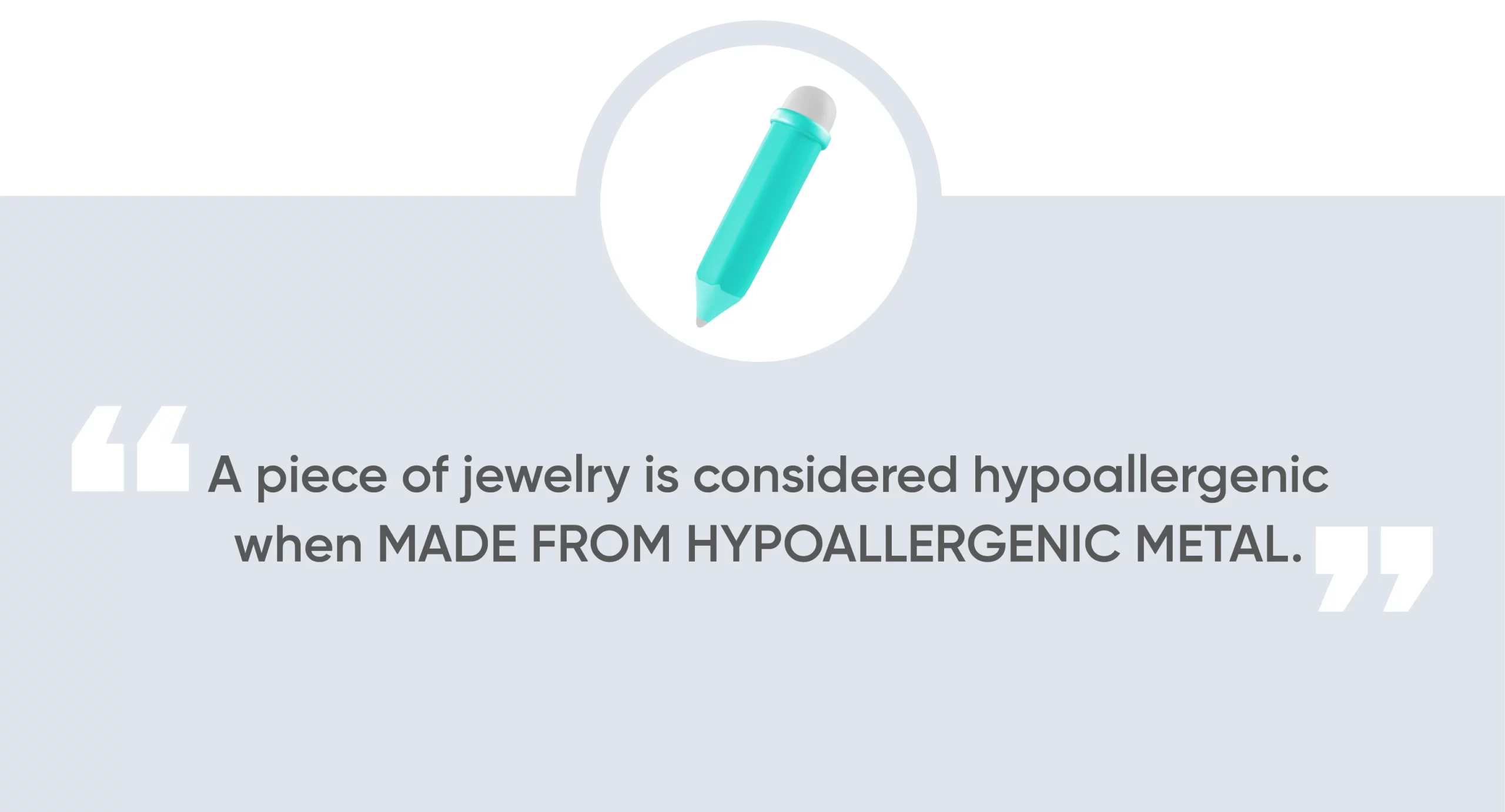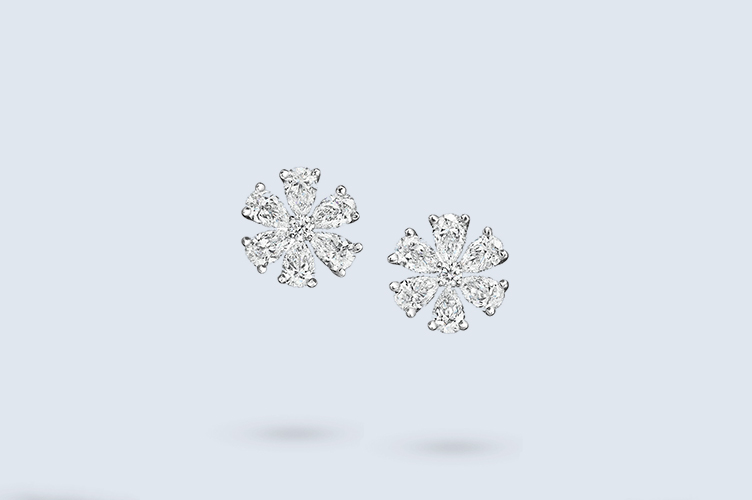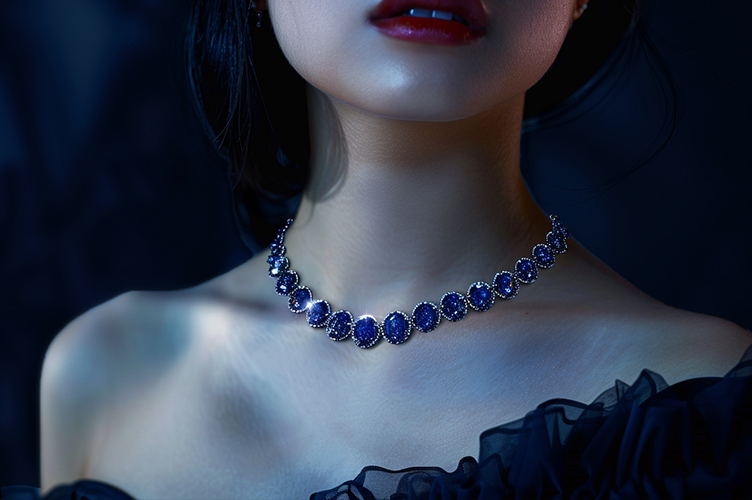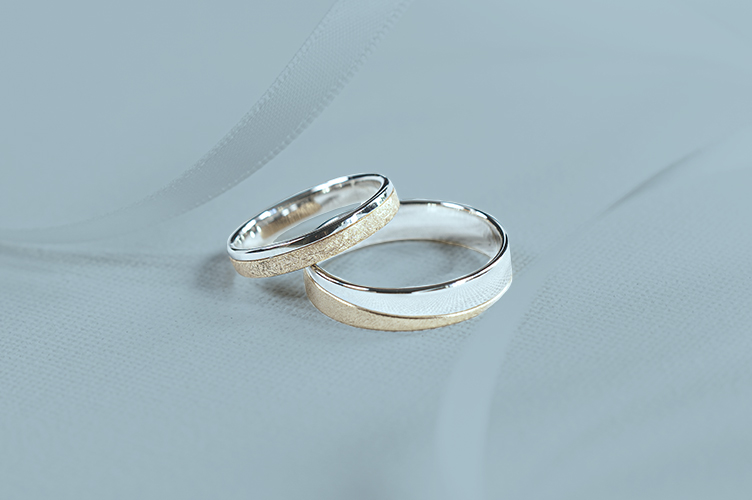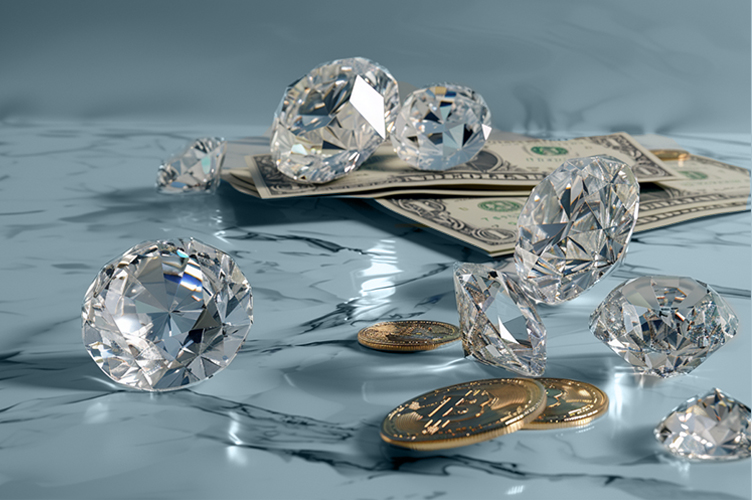What Metal is Hypoallergenic? Protect Your Sensitive Skin From an Allergic Reaction
Do you frequently find that you break out in a jewelry rash every time you put on a piece of jewelry? Do you think you’ll never be able to accessorize your favorite looks again without getting all red and itchy? Have you kicked your jewelry box to the curb out of frustration a long time ago?
Don’t worry. You can wear jewelry again (no rashes required!) because it’s highly likely that you’re not allergic to all jewelry per se. Instead, it’s more likely that your sensitive skin responds to certain types of metals that cause an allergic reaction. To get around this, you must choose jewelry made from hypoallergenic metals.
What You Will Learn
The Best Hypoallergenic Metals for People with Metal Allergies
What are hypoallergenic metals?
A piece of jewelry is considered hypoallergenic when it’s made from hypoallergenic metal. Hypoallergenic means that something (no matter what it is, jewelry or otherwise) is very unlikely to cause an allergic reaction.
So what metals are hypoallergenic? Here are a few of your options.
Sterling Silver
Sterling silver jewelry is a favorite for many reasons. It’s affordable and looks great, for starters. However, it’s those sterling silver hypoallergenic properties that make this popular metal a good pick for those with a metal allergy.
That said, if you’re shopping for sterling silver jewelry, be sure to look for sterling silver jewelry that specifically does not contain any nickel (if you have a nickel allergy). While the small amount of nickel sometimes used in a sterling silver alloy is not enough to cause reactions in most individuals, it’s still better to be safe than sorry.
Sterling Silver with Rhodium Plating
If you prefer the look of rhodium to sterling silver, then you might choose a piece of sterling silver jewelry that features rhodium plating. Just as you might when shopping for hypoallergenic sterling silver jewelry, however, be sure that the sterling silver used in any rhodium-plated jewelry is completely nickel-free.
Suggested Read: Can Sterling Silver Get Wet? | BriteCo Jewelry Insurance
Platinum
Platinum jewelry is popular for those looking for jewelry made from hypoallergenic metals. However, don’t expect cheap costume jewelry prices here. Fine jewelry often incorporates this precious metal into its designs, and, as such, you’ll find that it’s one of the pricier hypoallergenic jewelry materials on our list.
Pure Titanium
Titanium is not combined with any commonly irritating metals and so is a good fit for hypoallergenic jewelry. Additionally, titanium comes with a range of other benefits that make it attractive for jewelry, such as high durability and a lightweight feel. It’s also corrosion resistant.
Copper
While copper is hypoallergenic, it’s not exactly the best hypoallergenic jewelry material out there. Copper is known for turning your skin green (though this is just a weird side effect and isn’t dangerous) and isn’t very high quality.
Suggested Read: The Top Benefits of Wearing Copper
Brass
Brass is also hypoallergenic, but, likewise, brass, which is a mix of copper with zinc, is not one of your best hypoallergenic metal options, for the same reasons.
What Metals Are Not Safe for Those with a Common Metal Allergy
Beyond the above best hypoallergenic jewelry metals, there are some other metals that you should precisely steer clear of if you want to avoid allergic reactions. These include:
Stainless Steel
Stainless steel often contains nickel, so it’s not a good fit for those with allergies. Even medical grade stainless steel is not technically considered a hypoallergenic metal due to the nickel content.
Gold
Only pure gold is safe for those with jewelry allergies. However, unfortunately, pure gold is an incredibly soft metal, so it is not ideal for making jewelry. Most gold you see used in pieces today — whether yellow gold, rose gold, or white gold — is combined with other metals to form an alloy that may irritate sensitive skin or allergies.
Nickel
Of course, as mentioned, many allergies can be traced back to nickel, notorious for causing rashes. However, most pieces of jewelry do not advertise their use of nickel. Instead, jewelry makers use nickel with a blend of other, more desirable metals to create an attractive piece but potentially a hazard.
How Do You Treat Metal Allergies?
What if you’ve already worn one of these precious metals that often cause allergic reactions, whether you have nickel allergies or some other kind of sensitivity? If you find yourself facing a jewelry rash, which is the most common side effect of a jewelry allergy, remove the jewelry immediately and treat the rash using a cold compress and over-the-counter rash cream.
However, the best way to treat a metal jewelry allergy is with simple prevention. You can prevent an allergic reaction in advance by avoiding wearing jewelry made with a base metal that you know you’re allergic to, ensuring you know what’s underneath any silver plated jewelry, and keeping your jewelry clean and in good condition.
What Kind of Metal is Hypoallergenic, and Where Can I Buy Hypoallergenic Jewelry?
You can buy hypoallergenic jewelry just about anywhere that sells jewelry, particularly if you’re shopping for jewelry made from one of the more common hypoallergenic metals, like sterling silver.
To recap, these metals are hypoallergenic:
- Sterling silver
- Rhodium
- Platinum
- Titanium
- Copper
- Brass
And these are not:
- Stainless steel
- Gold
- Nickel
Hypoallergenic Jewelry FAQs
What makes jewelry hypoallergenic?
Hypoallergenic metal jewelry is simply made hypoallergenic by using metals that are safe for sensitive skin.
Do different karat counts impact whether or not jewelry is hypoallergenic?
Sort of. Suppose you have a piece with a karat count that indicates the jewelry was made from more hypoallergenic metal (like sterling silver) and less non-hypoallergenic metal (like nickel). In that case, there’s a chance that it might not give you an allergic reaction. However, because it might still contain a portion of that non-hypoallergenic metal, it’s not considered truly hypoallergenic.
Is there a most hypoallergenic metal?
No, but there are hypoallergenic metals that are less likely to be blended with non-hypoallergenic metals, such as platinum or titanium.
What metal is hypoallergenic for earrings?
Any of the above hypoallergenic metals are ideal for earrings or any other jewelry pieces.
Is Your Jewelry Protected?
Now that you know which metals are hypoallergenic, you can easily shop for your next piece of jewelry confidently, knowing that a new and favorite piece will not cause an uncomfortable allergic reaction.
However, beyond knowing what metal jewelry is hypoallergenic, it’s also important to arm yourself with additional knowledge — like learning how to protect your jewelry in the event of loss or damage.
That’s where BriteCo comes in. We offer specialized jewelry insurance that will help you cover the cost of replacing or repairing lost, stolen, or damaged jewelry, all at an affordable price.
Learn about BriteCo’s comprehensive coverage options and get your quote today!
Also Check:

